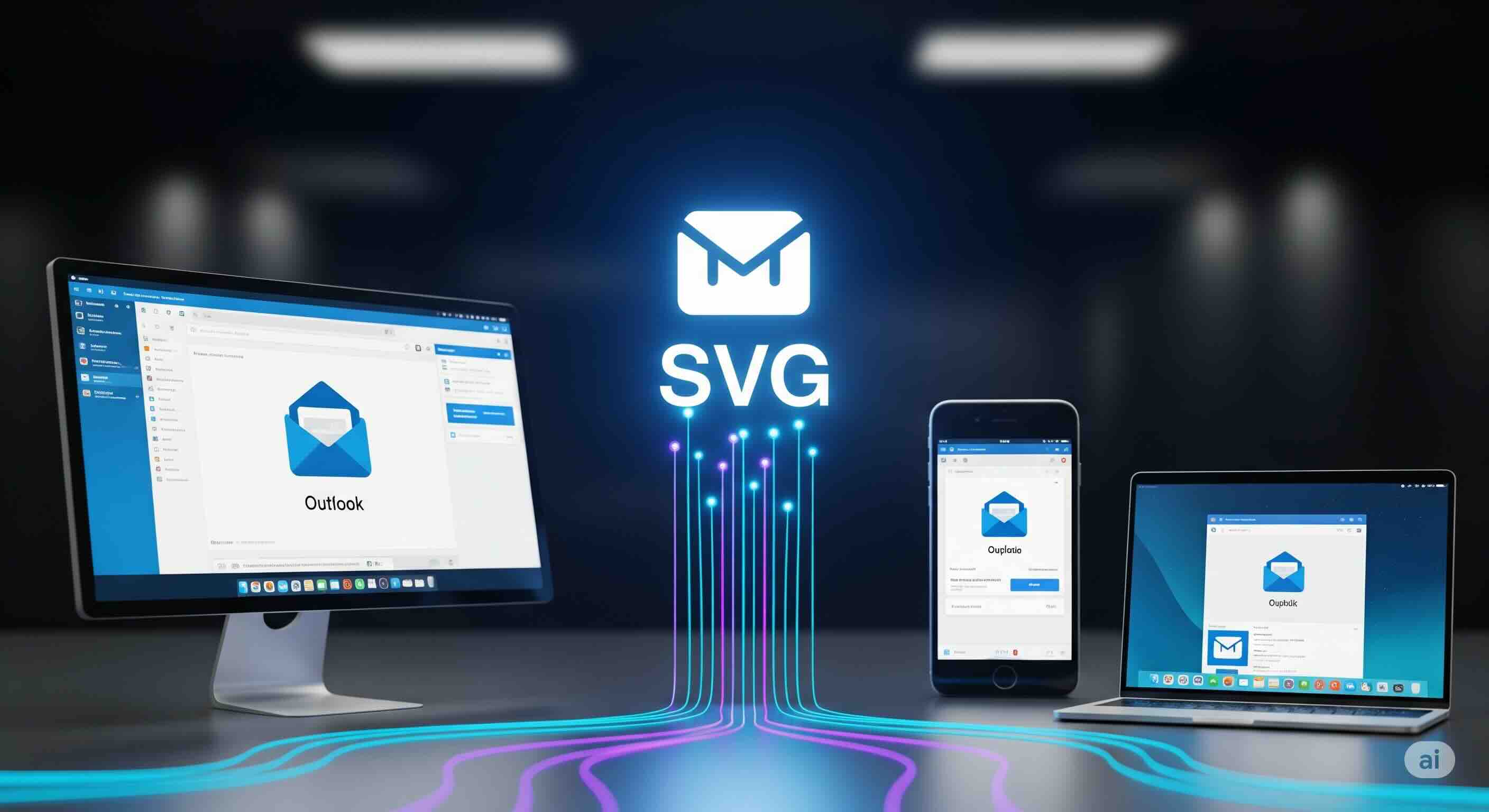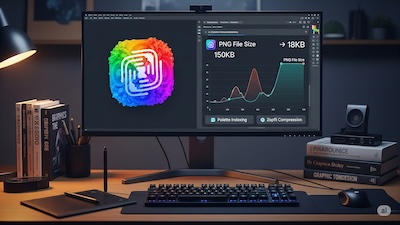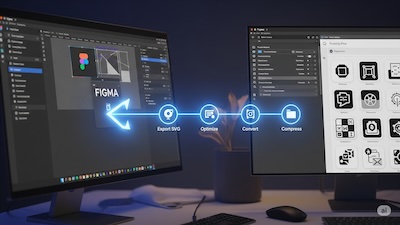No More Manual Sizing: Dynamic SVG-to-PNG Conversions for Email Campaigns
 iSVGtoPNG Team
iSVGtoPNG Team

I once spent an entire afternoon in a war room with a marketing team, trying to figure out why our beautifully crafted email campaign looked terrible. The hero banner was blurry in Outlook, the logo was pixelated on iPhones, and the social media icons were fuzzy in Gmail. The culprit? A completely outdated and manual image workflow that was no match for the chaotic world of email clients.
As a front-end specialist who has been in the trenches of web performance for over 15 years, I can tell you that email is the Wild West of rendering engines. Unlike the relatively standardized world of web browsers, email clients from Microsoft, Google, and Apple all play by their own rules, especially when it comes to images and screen density. The old method—exporting a single PNG and hoping for the best—is a guaranteed recipe for brand inconsistency and user frustration.
This guide is your way out of that manual, soul-crushing cycle. We're going to shelve the "save for web" dialog for good. I'll show you the professional, automated workflow for converting a single, master SVG into perfectly sized, crystal-clear PNGs for every email client, every time. This is how you reclaim your time, protect your brand's integrity, and deliver a flawless visual experience to every subscriber.
The Problem: Why One Image Size Fails in Email Clients
To solve the problem, you must first respect its complexity. An image in an email isn't just an image; it's a request to a dozen different rendering engines, each with its own quirks. The primary challenge is how they handle high-DPI (or "Retina") displays.
| Email Client | The Challenge | The Result of Using a 1x Image |
|---|---|---|
| Microsoft Outlook (Windows) | Aggressively resamples images based on the user's system-wide DPI settings (e.g., 125% or 150% scaling). | Blurry, artifact-ridden images. |
| Apple Mail (macOS & iOS) | Fully embraces high-DPI "Retina" displays and expects @2x or @3x assets for sharpness. | Pixelated, unprofessional-looking images. |
| Webmail (Gmail, Yahoo) | Behave like web browsers, exposing low-resolution images on high-DPI monitors. | "Fuzzy" or soft-looking images. |
This fragmentation means a single 600px wide PNG is doomed to fail. The only viable solution is to serve the *right* size for the *right* client, and doing that manually is impossible at scale.
The Solution: Dynamic On-the-Fly Image Conversion
The professional workflow abandons the idea of pre-exporting every possible size. Instead, it relies on a "single source of truth"—your master SVG file—and generates the required PNG on demand, perfectly tailored to the request. This is achieved through an image service or a custom script that can take your SVG and transform it based on URL parameters. Imagine having a single link to your logo's SVG, and being able to do this:
/logo.svg?format=png&width=50-> Generates a 50px wide PNG./logo.svg?format=png&width=100-> Generates a 100px wide PNG for Retina screens.
This is the core of a dynamic conversion system. You store one file and can create infinite variations without ever opening a design tool.
A 3-Step Workflow for Dynamic Email Images
Setting up a fully dynamic system can range from using a third-party service to building your own. But every professional workflow starts with the same foundational steps.
Step 1: The Perfect Source SVG
Your output is only as good as your input. Before you even think about conversion, your source SVG must be pristine. Use a dedicated SVG optimizer to programmatically strip out metadata, editor comments, and redundant groups. This not only reduces file size but also prevents a host of conversion problems. As we've detailed before, hidden SVG code is a silent killer that can completely wreck your final PNG output.
Step 2: Choosing Your Dynamic Conversion Method
Once you have a clean SVG, you need a way to serve it dynamically. Here are your options:
| Method | Best For | Pros & Cons |
|---|---|---|
| Third-Party Image CDNs (e.g., Cloudinary, Imgix) | Most teams | Pro: Robust, globally cached, easy to use. Con: A paid service. |
| Self-Hosted Solutions (e.g., AWS Lambda) | Advanced teams with engineering resources | Pro: Full control, potentially cheaper at scale. Con: Requires setup and maintenance. |
| The "Smart Batch" Method | Smaller projects or as a starting point | Pro: Simple, no server needed. Con: Not truly dynamic; a semi-automated process. |
The "Smart Batch" method involves using a powerful SVG Batch Converter to generate the 2-3 key sizes you'll need for a campaign in one go. It's a massive improvement over manual exporting, similar to the process for automating @2x/@3x web assets.
Step 3: Implementing in Email HTML (The Right Way)
This is where we put the theory into practice. To combat Outlook's DPI scaling and satisfy Retina displays, you serve an image that is twice the intended display size and then constrain it with HTML `width` and `height` attributes. For a logo that should appear 150px wide:
- Request a 300px wide PNG from your dynamic service.
- Set the HTML width to 150. This tells all email clients to display it in a 150px space.
Here's what the code looks like:
<!-- This image will look crisp everywhere -->
<img src="https://your-service.com/logo.svg?format=png&width=300"
width="150"
alt="Company Logo"
style="display:block; width:150px; max-width:100%; height:auto;">
And don't forget that properly adding alt text is just as crucial in email as it is on the web for accessibility.
Conclusion: Automate Your Way to Perfect Emails
The battle for pixel-perfect images in email campaigns isn't won with more manual labor; it's won with a smarter, automated workflow. By establishing a clean SVG as your single source of truth and leveraging a dynamic conversion service, you eliminate human error, save countless hours, and ensure your brand looks sharp and professional in every inbox.
Stop wasting your time in the "save for web" dialog. Embrace a dynamic workflow and spend your energy on what really matters: creating campaigns that resonate with your audience, confident that your visuals will always be flawless.

iSVGtoPNG Team
iSVGtoPNG Team is a front-end developer and graphics enthusiast with over 10 years of experience in web technologies. She loves exploring the intersection of design and code.


